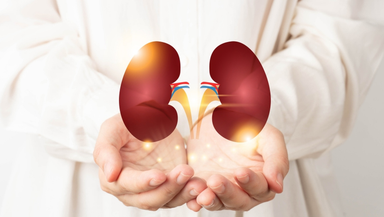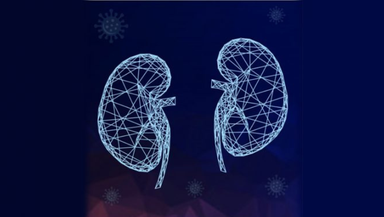Hemiplegia: Causes and Treatments for Partial Paralysis

What is Hemiplegia?
Hemiplegia is a condition that involves paralysis of one side of the body. It occurs due to brain or spinal cord injury. It affects muscle movement and control on the paralysed side and causes muscle stiffness. Hemiplegia can be either permanent or temporary. It is often caused due to life-threatening medical conditions, such as stroke or trauma to the spinal cord or the brain. Its treatment depends upon the underlying causes of hemiplegia.
Read to know more about hemiplegia, its causes and treatment, and how people with hemiplegia live with the condition.
Categories of hemiplegia
The following are the types of hemiplegia that can cause symptoms of hemiplegia.
- Spinal Hemiplegia
Spinal hemiplegia affects one side of the spinal cord. It causes paralysis on the side of the body that has been injured. It causes a loss of pain and temperature sensation to the affected side.
- Facial Hemiplegia
Facial hemiplegia affects one side of the face. It may also affect other parts of the body.
- Cerebral Hemiplegia/Cerebral palsy
Cerebral hemiplegia is a condition where paralysis occurs on the opposite side of the body that has suffered from brain damage. it causes contractions in the muscles of the affected side. It also causes stiffness in the paralysed body.
- Spastic Hemiplegia
Spastic hemiplegia is cerebral palsy affecting one side of the body. The muscles on this side suffer from constant contractions or spasms.
- Childhood Hemiplegia
Childhood hemiplegia affects children below 18 months. It leads to recurring episodes of hemiplegia that affect either one side or both sides of the body.
What are the causes of hemiplegia?
Hemiplegia occurs due to problems affecting the brain and the spinal cord that make up the central nervous system. There are several causes of hemiplegia. These are:
- Brain Stroke
- Brain tumour
- Brain Traumatic
- Brain injury
- Spinal cord injury
- Nervous system diseases, such as multiple sclerosis
- Infections affecting the nervous system
- Seizures and epilepsy
- Migraine headaches
- familial hemiplegic migraine
How is hemiplegia diagnosed?
For a proper diagnosis of hemiplegia, doctors perform a detailed neurological examination, analyse your sensory and motor functions, and review your medical history.
Doctors advise the following tests to determine the underlying causes of hemiplegia:
Blood tests to help check for infections and malignancies:
- Complete blood count (CBC)
- Erythrocyte sedimentation rate (ESR)
- Coagulation test
Imaging tests:
- Magnetic resonance imaging (MRI)
- Computed Tomography (CT Scan) of the head
- Electroencephalography (EEG) to measure the electrical activity of the brain
What are the complications associated with hemiplegia?
Complications associated with hemiplegia are often noticed after some months after paralysis occurs. These are:
- Pain
- Tight, inflexible muscles
- Muscle weakness
- Bladder problems, such as incontinence
- Bowel control problems
- Deep vein thrombosis or blood clot in a deep vein, usually in the weak legs
- Infection in the bloodstream or sepsis, secondary to ulcers developed over the weak limb
- Respiratory problems
- A sudden increase in blood pressure
- Bed sores
- Depression
How to treat hemiplegia?
Treatment of hemiplegia depends upon the underlying causes of hemiplegia and the symptoms of hemiplegia.
Some symptoms of hemiplegia are treatable and also curable. But some conditions may cause permanent damage to the spinal cord and the brain due to trauma. These may improve over time to some degree.
Along with treatments, doctors also recommend the assistance of the following therapists to help improve the sensation, muscle function, and motor abilities to help you perform your everyday activities.
- Physical therapists
- Rehabilitation therapists
- Occupational therapists
- Psychologists
Doctors also recommend medications for other reasons associated with hemiplegia, like
- relieving symptoms of anxiety
- treat seizures
- antibiotics to treat brain infections
- blood thinners to prevent blood clots and strokes
- neuromuscular electrical stimulation (NMES) to decrease spasticity and improve the functioning of the muscles
What can be done to prevent hemiplegia?
Hemiplegia is an unpredictable condition. You can make lifestyle changes for the prevention of hemiplegia and avoid circumstances that cause hemiplegia, such as
- Eat a balanced diet to maintain your cholesterol and blood sugar levels and reduce the risk of stroke.
- Maintain a healthy body weight.
- Manage chronic conditions like diabetes, cholesterol, high blood pressure, and epilepsy.
- Get immediate medical treatment for infections of the ears and eyes, as these can spread to the brain if left untreated.
- Always wear safety equipment, such as helmets and seat belts, that safeguard against head, neck and back injuries that increase the risk of hemiplegia.
How do people live with hemiplegia?
Living with hemiplegia is difficult. It needs adjustments in your everyday habits and relearning to do your daily activities to cope with the condition.
Doctors advise the following exercises and therapies to improve your overall physical and mental well-being:
- Strength training to improve the functionality of your limbs.
- Seated aerobics helps burn calories and improve your health.
- Water aerobics helps move the muscles that get neglected during seated aerobics.
- Muscle stretching helps reduce pain in the muscles and joints.
- Occupational therapy to help resume everyday activities for independent living.
- Support groups offer a safe space to unburden your stress and find support to deal with the emotional stress.
Everyday activities that people with hemiplegia need to relearn are:
- Learning to eat with one hand and preparing foods to be eaten with one hand.
- Maintaining an everyday routine for personal hygiene to help tackle bladder and bowel control problems.
- Remodelling the layout of their homes to help ease the usage of wheelchairs to perform everyday tasks such as cleaning, dusting, or doing the dishes independently.
- Using robotic vacuum cleaners that help in maintaining a clean house.
- Using assistive devices that make dressing up easier with one hand, such as using velcro tapes instead of buttons and choosing shoes without laces.
- Wearing loose, comfortable clothes that are easy to slip on and off.
Bottom Line:
Hemiplegia is an unpredictable condition. It involves paralysis on either your body's left or right side. It happens due to an injury to the brain or spinal cord or life-threatening conditions such as strokes. Treatment of hemiplegia depends upon the severity of the condition and the symptoms. Treatment of hemiplegia requires a multidimensional approach. To help you live a better life, your doctor will recommend medications and various therapies for your overall physical and mental well-being.
Please book an appointment with our expert neurologists in Hyderabad at the Gleneagles Aware Hospital, Hyderabad. They will provide more information about the treatment and care of hemiplegia.
Specialities
Clear allMeet the doctor

Dr Suresh Reddy Challamalla
Neurology
MD (Gen. Med), DM (Neuro) (NIMS)











